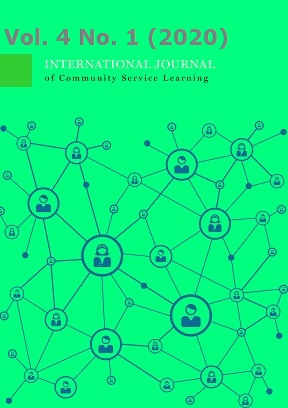Pelatihan Cara Berpikir Simbolik-Matematik di SMA BOPKRI 2 Yogyakarta
DOI:
https://doi.org/10.23887/ijcsl.v4i1.23099Abstract
Symbolic-Mathematical Thinking is a technique of thinking to solve mathematical problems. This technique is the result of a combination of Symbolic Logic and Mathematics. In general there are three symbolic logic activities that are applied to Mathematics, namely reading symbols, logical equivalents and logical implications.
This Pengabdian kepada Masyarakat (PkM) has activities to train Symbolic-Mathematical thinking using 15 strategies for BOPKRI 2 high school students.
The results of this training are three important things. The first result is the type of problem that is most difficult for students to face is the type of problem that requires drawing conclusions that refer to standard mathematical definitions. The second thing is for the type of use of model settlement strategies in a system and the type of seeing patterns, students tend to be able to solve problems after being given instructions on how the model fits the problem and the pattern the problem has. Whereas the third is from two groups of students the class turns out that the continuous class attending the training gets more symbolic-mathematical thinking skills improvement than the other classes.
References
-. (2016). Tim Pustaka Cerdas , Siap Jadi Juara Sains Nasional Matematika SMP. Pustaka Baru Press.
Behlol, M. G., Akbar, R. A., & Sehrish, H. (2018, April). Effectiveness of Problem Solving Method in Teaching Mathematics at Elementary Level . Bulletin of Education Research Vol. 40 No. 1 , pp. 231-244.
Ben-Ari, M. (2012). Mathematical Logic for Computer Science third Edition. London: Springer-Verlag.
Copi, I. M., Cohen, C., & McMahon, K. (2014). Introduction to Logic Fourteenth Edition. Pearson New International Edition.
Grassmann, W. K., & Tremblay, J. P. (1996). Logic and Discrete Mathematics, A Computer Science Perspective. New Jersey : Prentice Hall.
Huth, M., & Ryan, M. (2004). Logic in Computer Science, Modelling and Reasoning about System. Cambridge University Press.
Mason, J., Burton, L., & Stacey, K. (1982). Thinking Mathematically. Addison-Wesley Publishing Company.
Mujiyati. (2015). Siap Jadi Juara Nasional Matematika SMA. Pustaka Baru Press.
Smullyan, R. M. (2009). Logical Labyrinths. Wellesley, Massachusetts : A K Peters, Ltd.
Stacey, K. (2005). The Place of Problem Solving in Contemporary Mathematics Curriculum Documents. The Journal of Mathematicsal Behavior 24 (3-4) , 341-350.
Takahashi, A. (2006). Characteristics of Japanese Mathematics Lessons. Tsukuba Journal of Educational Study in Mathematics Vol. 25 .
Wibowo, & Singgih, S. (2012). Menyongsong OSN Matematika SMP. Pustaka Pelajar.
Downloads
Published
How to Cite
Issue
Section
License

International Journal of Comunnity Service Learning is licensed under a Creative Commons Attribution-ShareAlike 4.0 International License.













